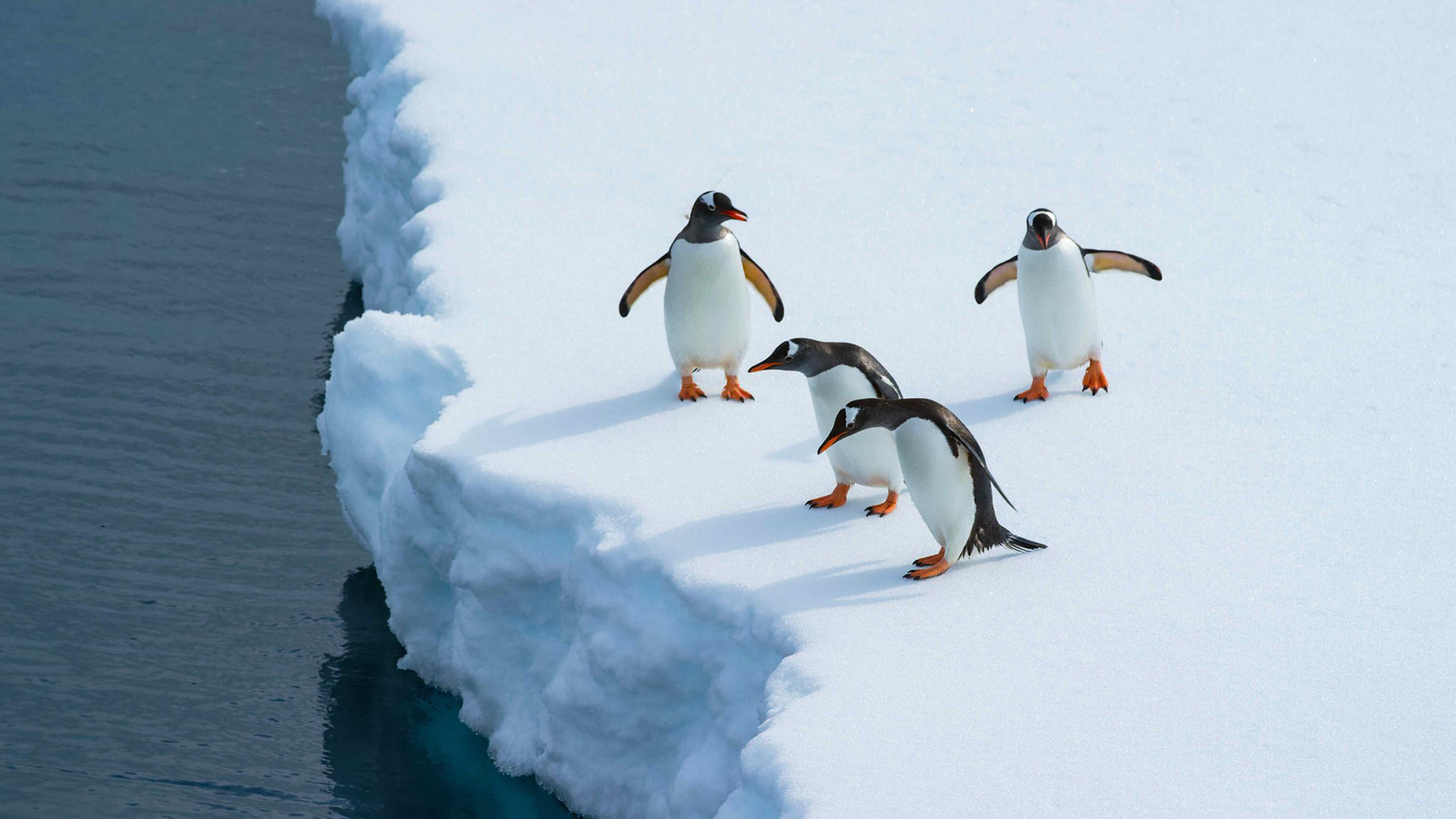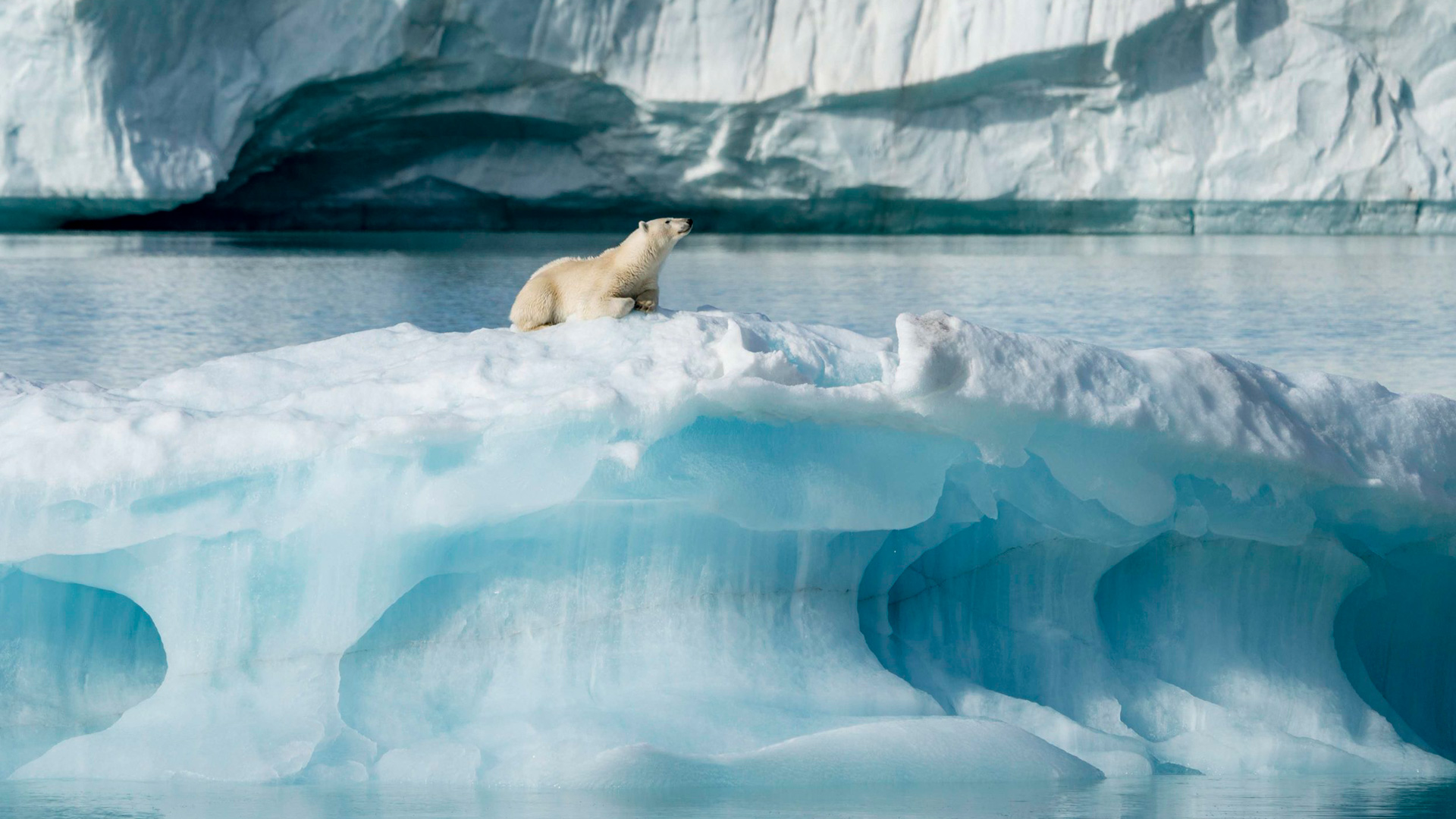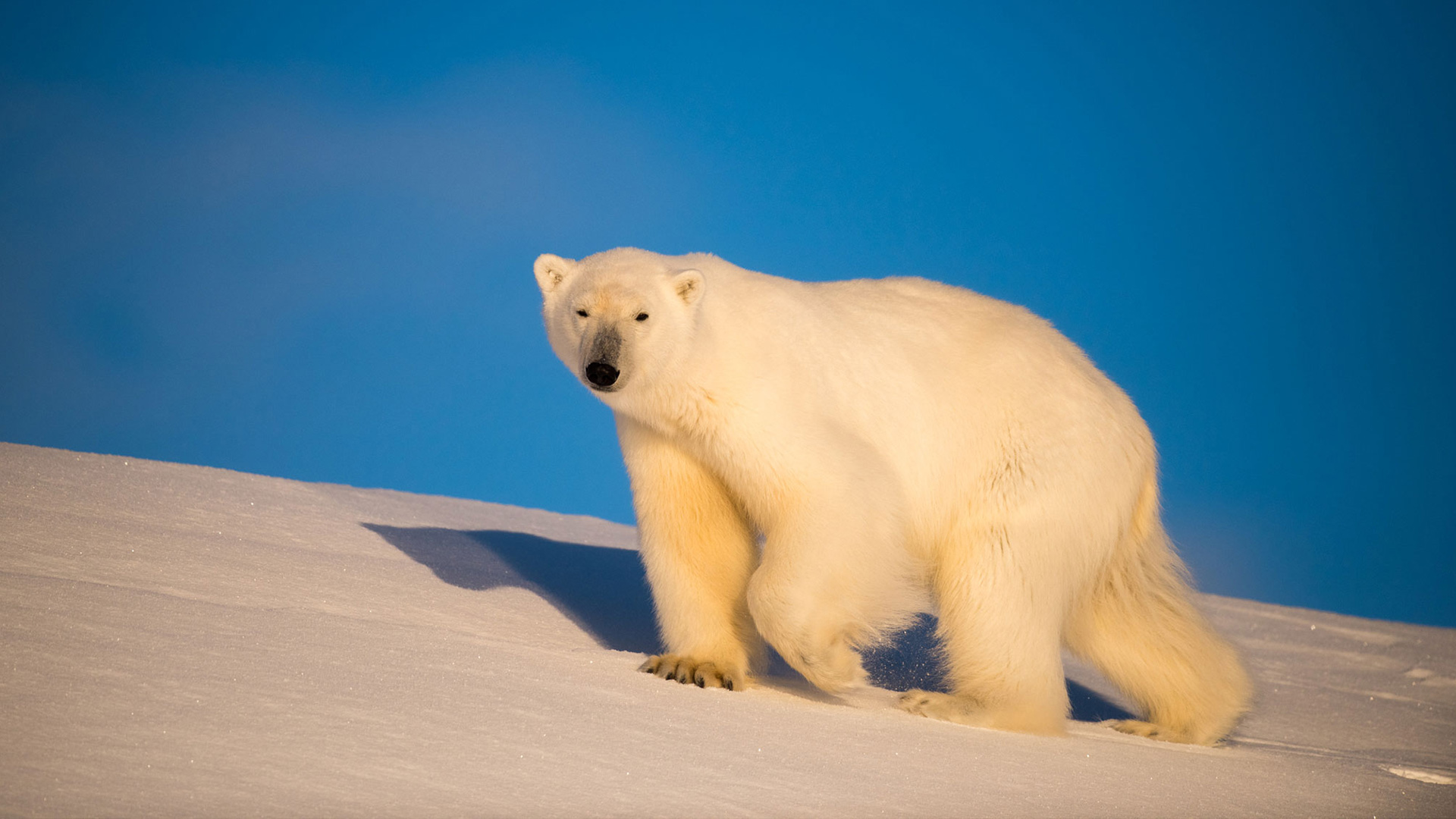One of the many reasons to venture into the wilderness of Antarctica is the chance to experience the penguin colonies that call it home.
Join us to discover when and where to see some of Antarctica’s most charismatic creatures and some of the world’s most unique wildlife.
King Penguin
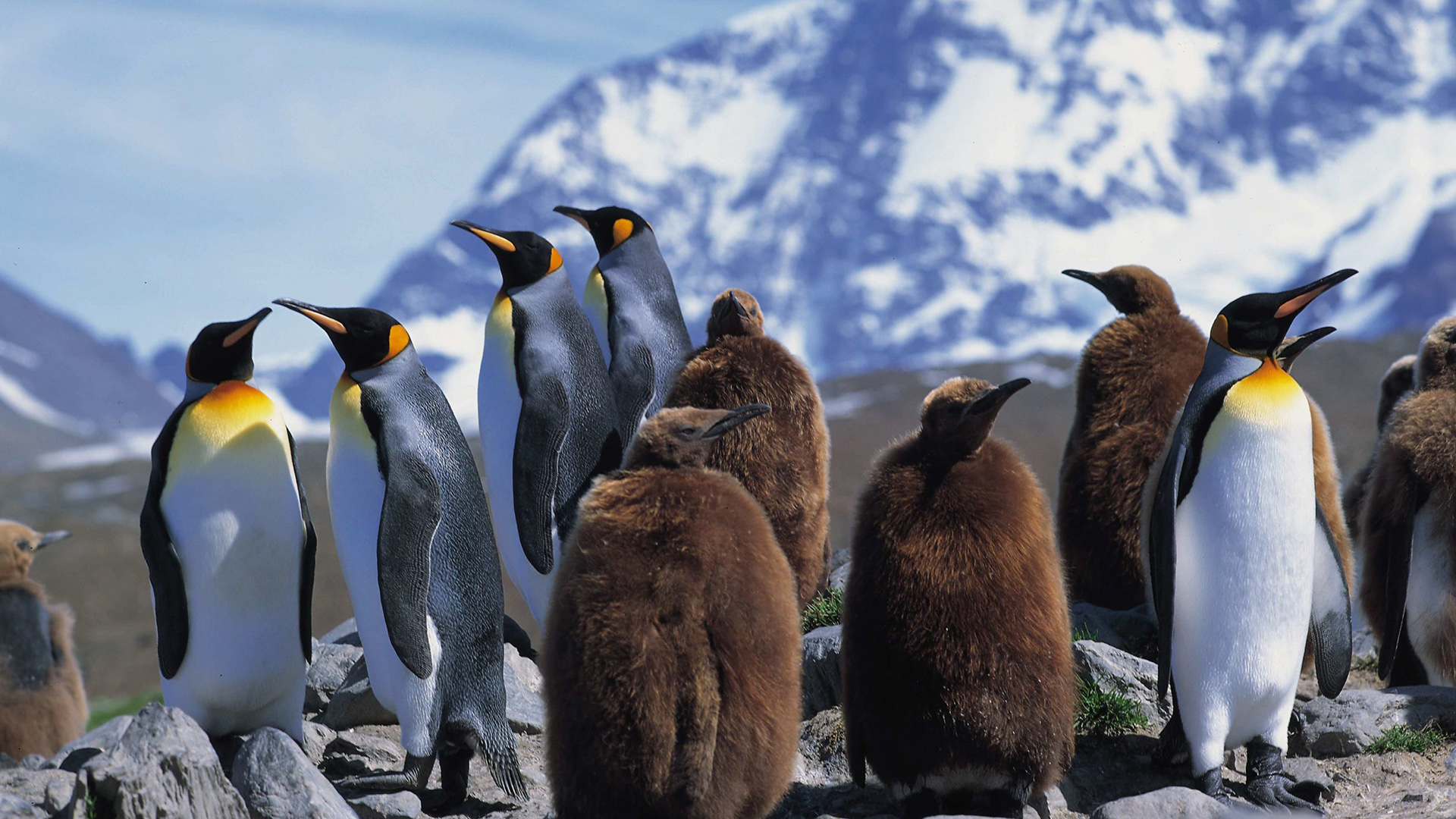
Where: Subantarctic islands only, South Georgia being the best
When: November to March (Antarctic summer)
There’s no feeling quite like stepping ashore in South Georgia to be among hundreds of thousands of King penguins. The most striking and brightly colored of the penguins, kings are second in size to the emperor and sport a beautiful yellow-orange throat patch, an orange, inverted teardrop-shaped marking on either side of their black heads, and long, curved elegant beaks. Since they form breeding colonies on subantarctic islands and not sea ice, king penguins can spread their breeding season over a much longer time, between 14 and 16 months. They also spend a much longer time raising and caring for their chicks.
Like emperors, kings do not build nests but incubate their eggs on their feet, keeping them warm under a feathery fold of skin. Both parents take turns incubating for periods of 1 to 2 ½ weeks while the other goes off to hunt. Chicks have fluffy brown plumage until about a year old when they acquire their adult feathers and coloring. They look so different from their parents that juveniles were once thought to be a different species. And sailors christened them “oakum boys” because the. brown plumage reminded them of the color of oakum used to caulk timbers on sailing ships.
Emperor Penguin
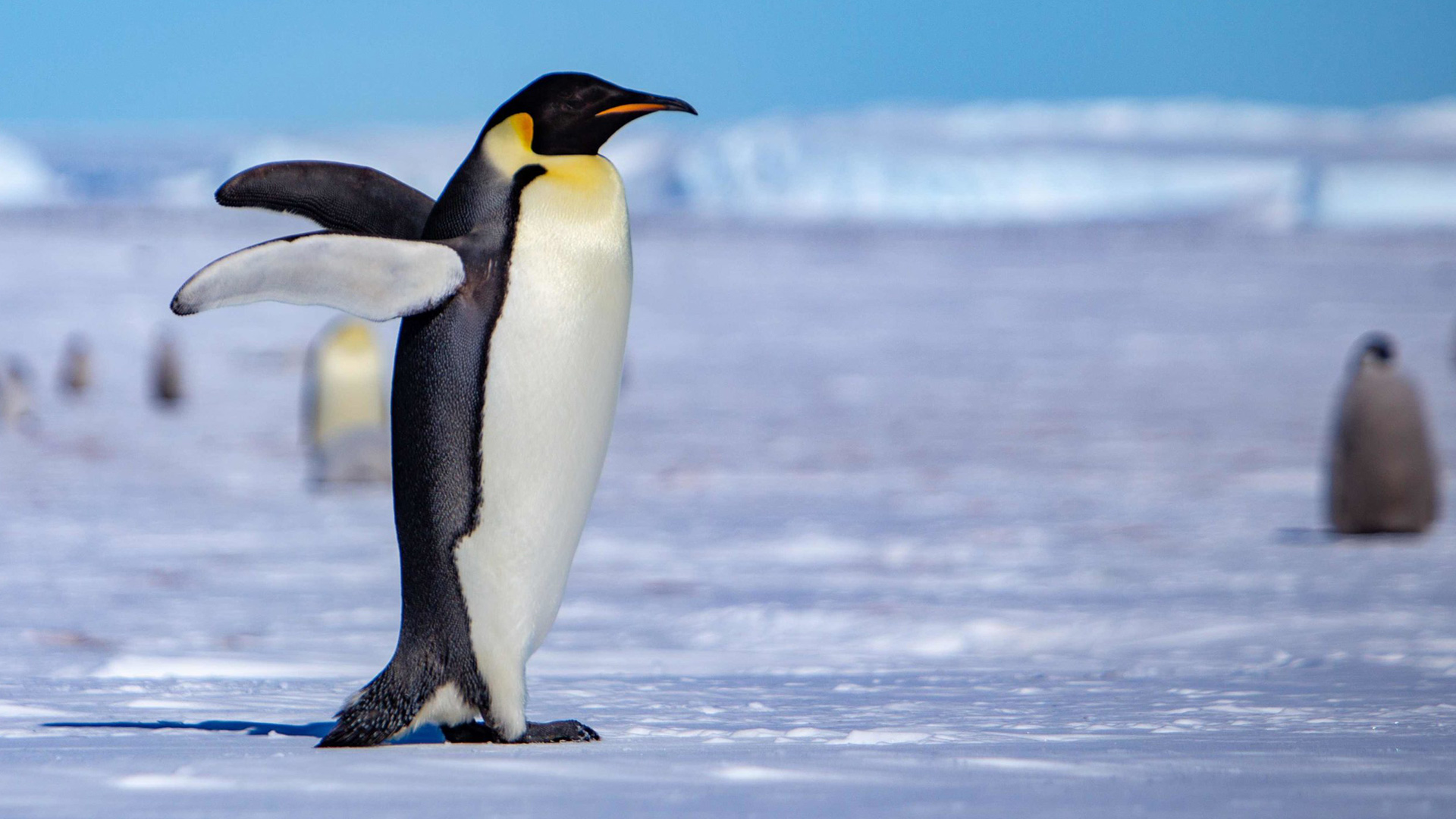
Where: Ross Sea, Weddell Sea region, South Pole Interior
When: November to March (Antarctic summer)
The Emperor penguin, the largest of all penguin species, commands attention with its size and presence. Standing at an impressive height of about 1.2 meters (4 feet), these magnificent birds possess a sleek, streamlined body perfectly adapted for life in the icy Antarctic. Their iconic black and white plumage, coupled with a bright yellow patch on their necks, creates a striking visual contrast against the snowy backdrop.
Emperors are well-known for their incredible endurance, braving the harshest conditions with temperatures plummeting to -50 degrees Celsius (-58 degrees Fahrenheit) and fierce winds exceeding 100 kilometers per hour (62 miles per hour). Unlike all other penguins, which nest on land, emperors make their colonies on the sea ice, likely never once stepping foot on land. These incredible swimmers dive deeper and longer than any other bird, up to 700 feet, and can stay underwater for 18 minutes as they hunt crustaceans, squid, and fish.
Gentoo Penguin
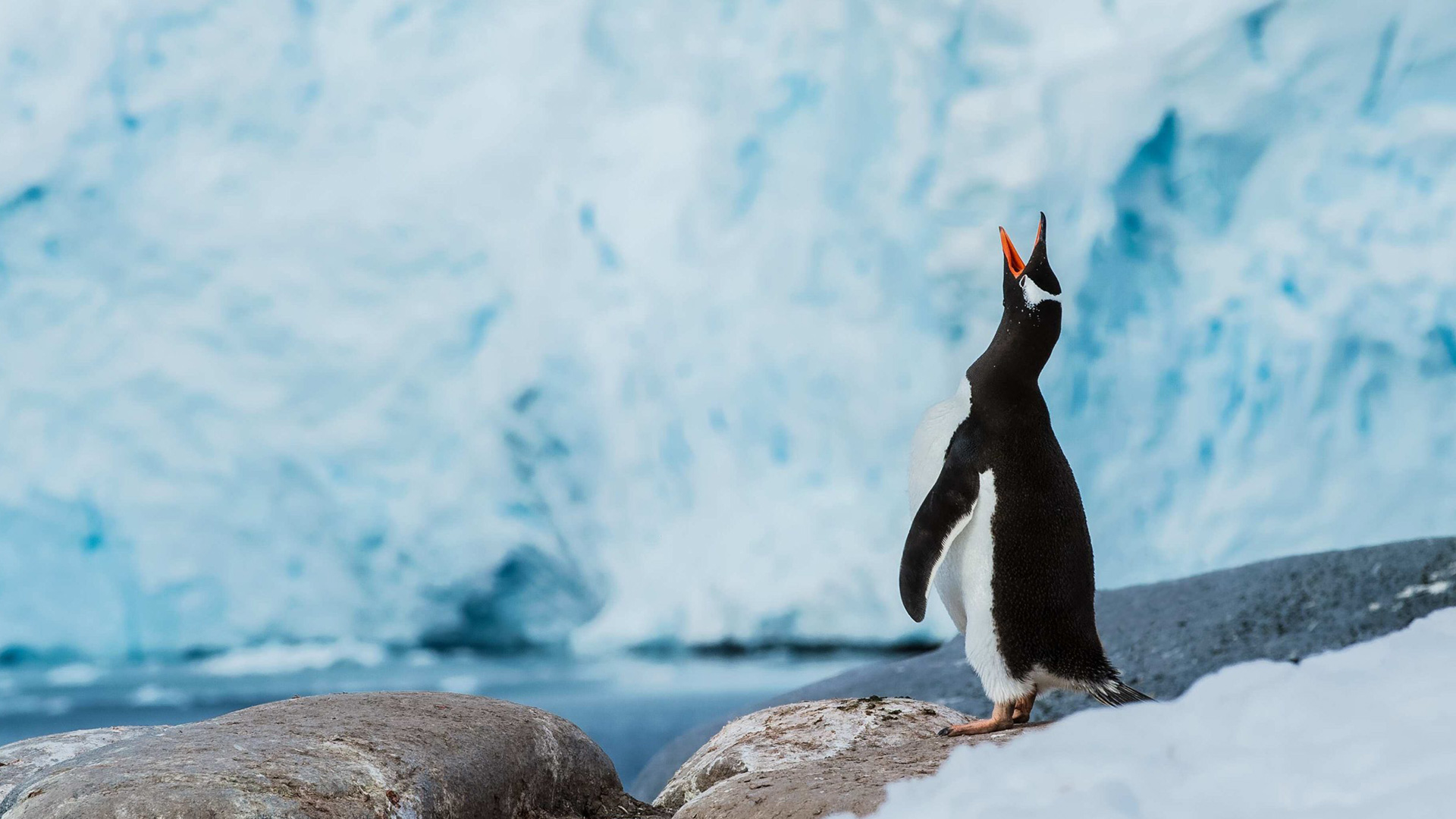
Where: Very abundant on the Northern Antarctic Peninsula and subantarctic islands like South Georgia, the Falklands, and the South Shetlands
When: October to March (Antarctic summer)
Gentoo penguins bring a splash of vibrant color to the Antarctic landscape with their distinctive features. These charming creatures exhibit a vibrant orange-red beak, complemented by a white patch above their eyes. Gentoo penguins are the third-largest penguin species and possess a sleek and streamlined body, allowing them to navigate the frigid waters with agility. They can reach 22 miles per hour—faster than any other diving bird—and dive to depths of 655 feet.
On land, they nest in rocky areas. So to these penguins, pebbles are happiness. Gentoo penguins construct circular nests using rocks, showcasing their diligent construction skills. It is a common sight to see birds move rocks around their nesting site and even steal the best rocks from the nests of others. Encountering these graceful birds is a joy for nature lovers and photographers alike.
Adélie Penguin
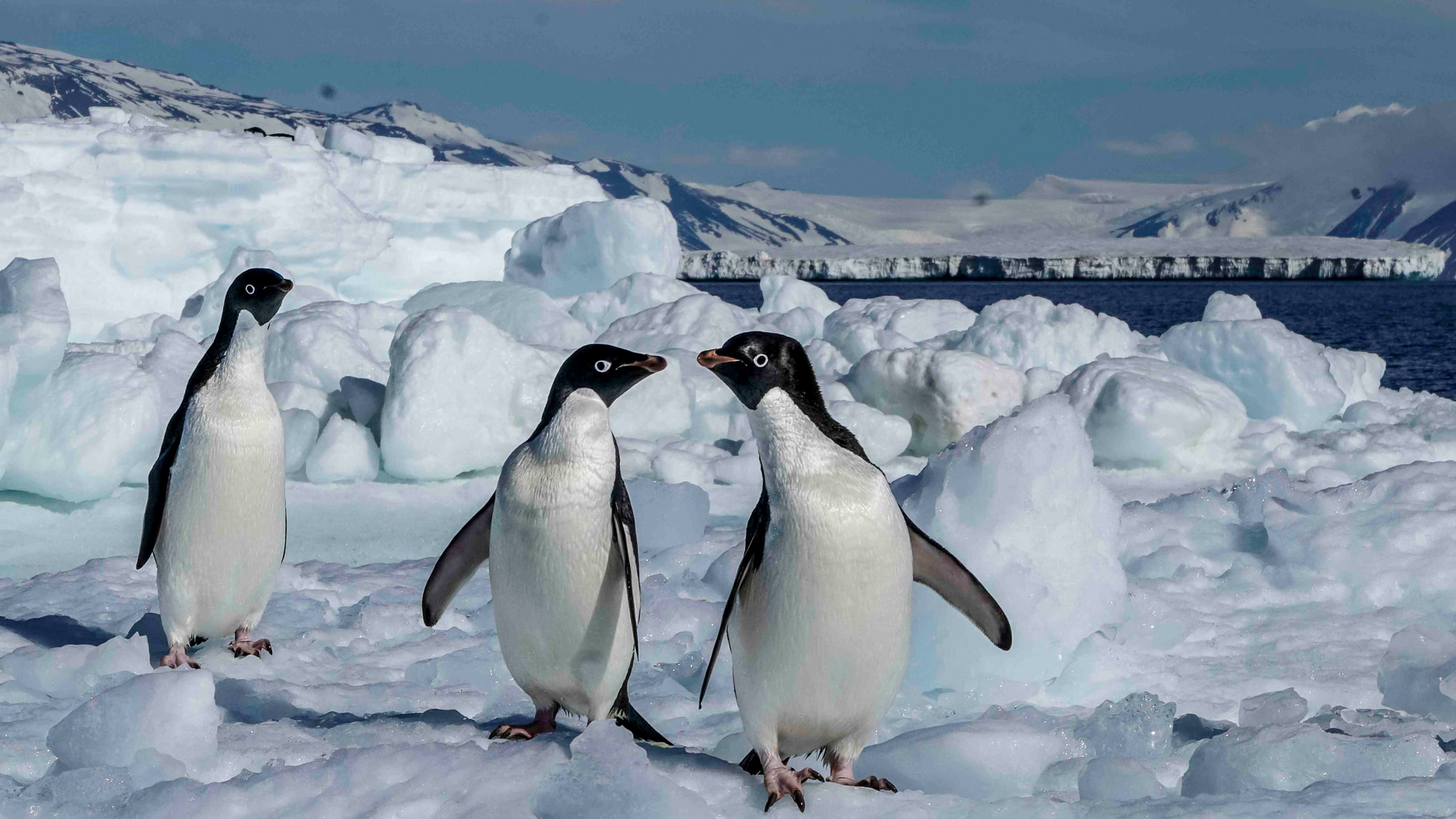
Where: Near the tip of the Antarctic Peninsula, the Weddell Sea, the islands and mainland in the Ross Sea
When: October to February (Antarctic summer)
Adélies, with their striking tuxedo-like appearance, are some of the most endearing and cartoon-like penguins. These resilient birds are perfectly adapted to the harsh Antarctic environment, boasting a black head and back that contrast sharply with their white bellies. A distinguishing feature is the white ring encircling their eyes, which helps reduce glare. Adélie penguins are agile swimmers, propelling themselves through the icy waters in pursuit of their preferred diet of krill and fish.
During the breeding season, huge colonies commonly form with hundreds of thousands of individuals. But courting and breeding are brief—it’s one of the shortest of all other penguins— and colonies can evacuate and disappear seemingly overnight. During this time, males can be seen presenting females with pebbles as a token of affection. Their molting period, which occurs at the end of the breeding season, is as swift as the mating period.
Chinstrap Penguin
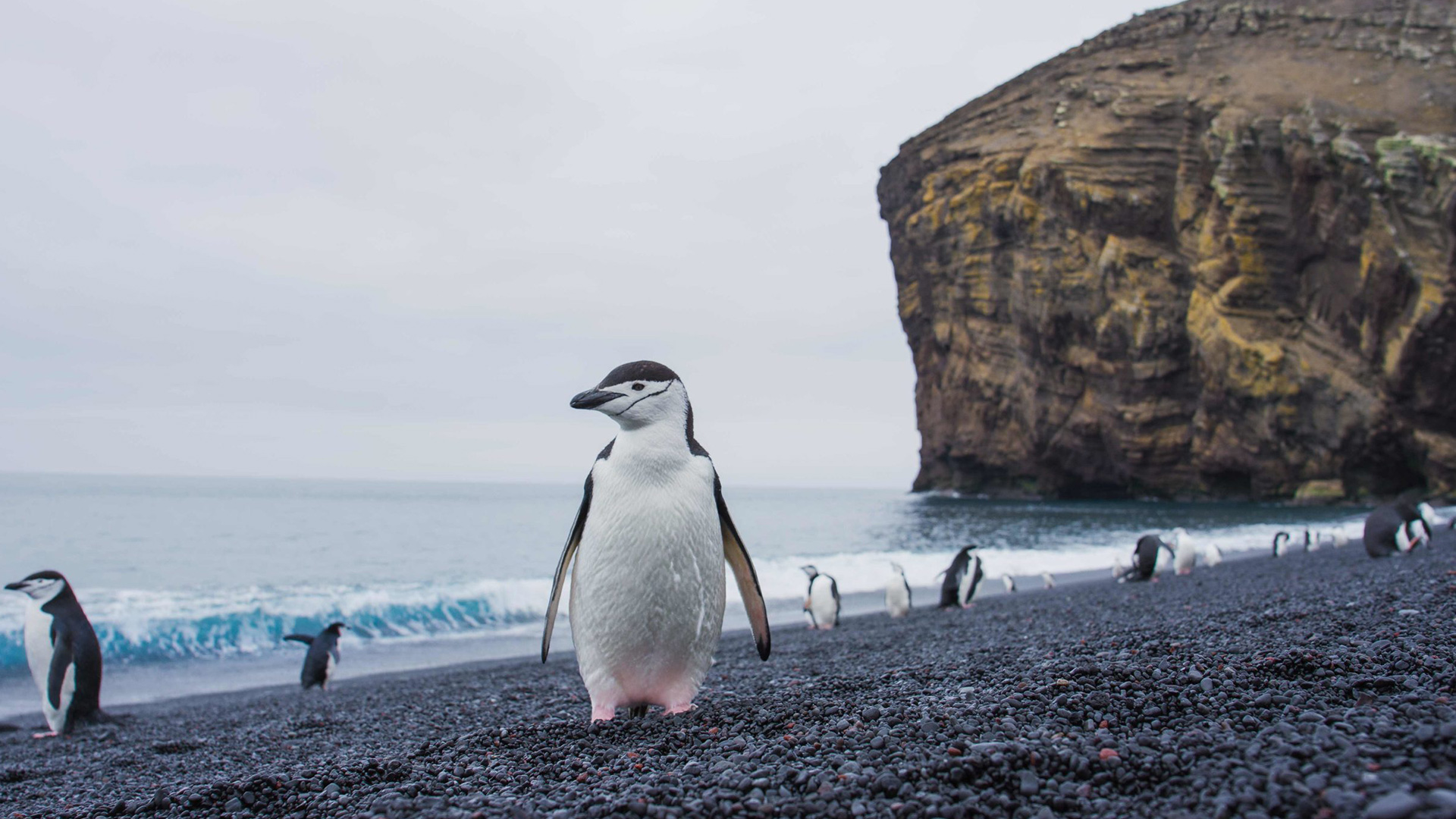
Where: Very abundant all over Antarctica and the subantarctic islands
When: November to March (Antarctic summer)
Chinstraps look similar to the Adélies in both markings and size except for that narrow black band (or strap) under the head which makes it look like it’s wearing a little black helmet. With roughly 7 million pairs in the world, this is one of the most abundant species so chances to see them are high. And also like Adélies, the chinstraps tend to form huge colonies numbering in the hundreds of thousands or more. Mates give an incredible performance, aptly named the ecstatic display, when they are courting or exchanging places at their nests. They’re very social birds in general and have multiple forms of communication from bowing and preening to flipper and head waving and gesturing. But they’re also one of the most aggressive species of penguins and can get into some very heated showdowns over nesting space.
